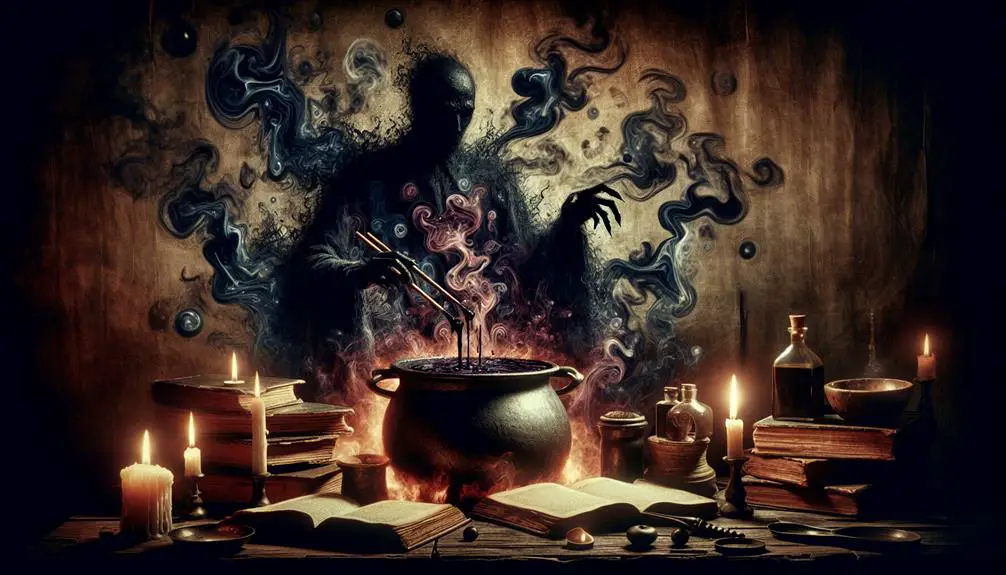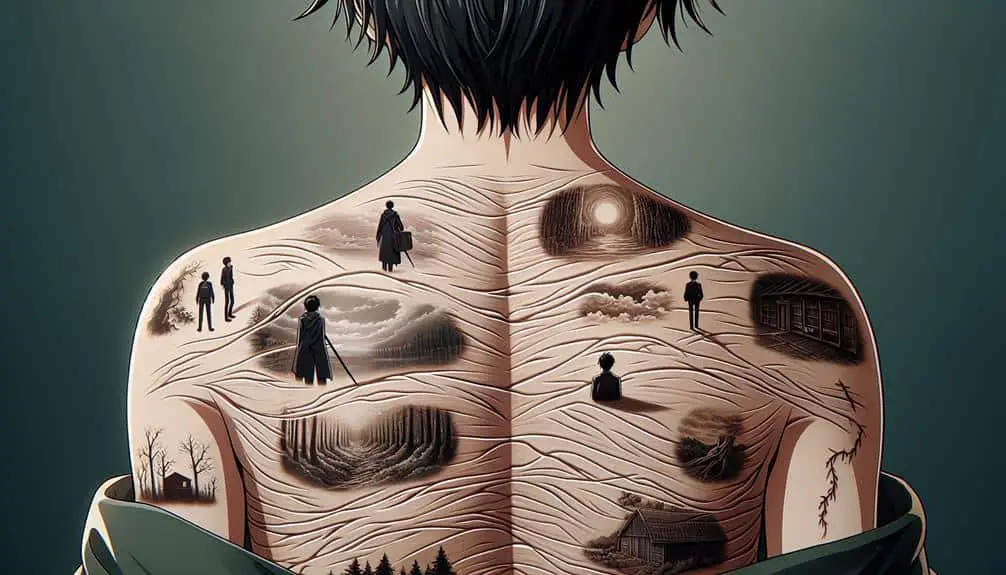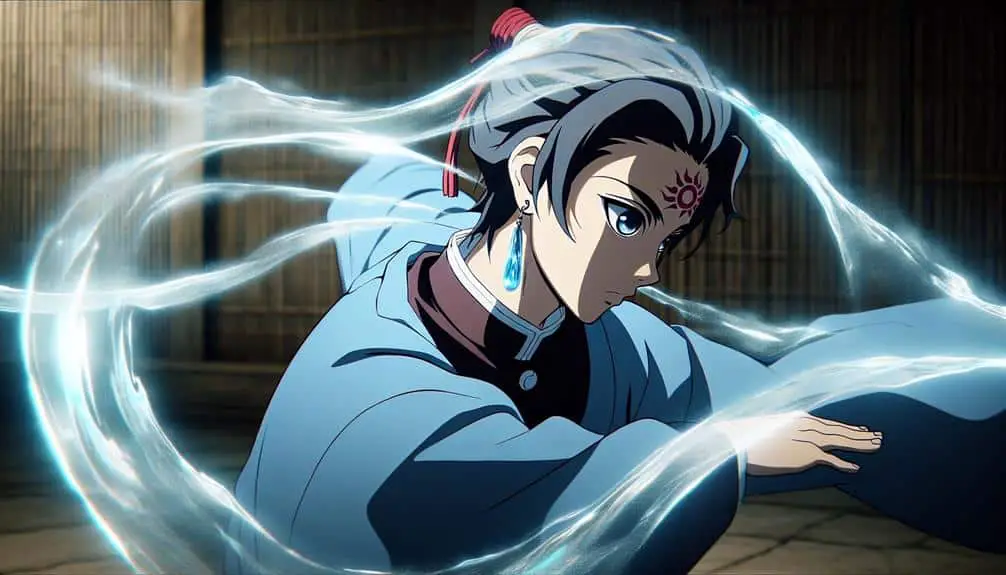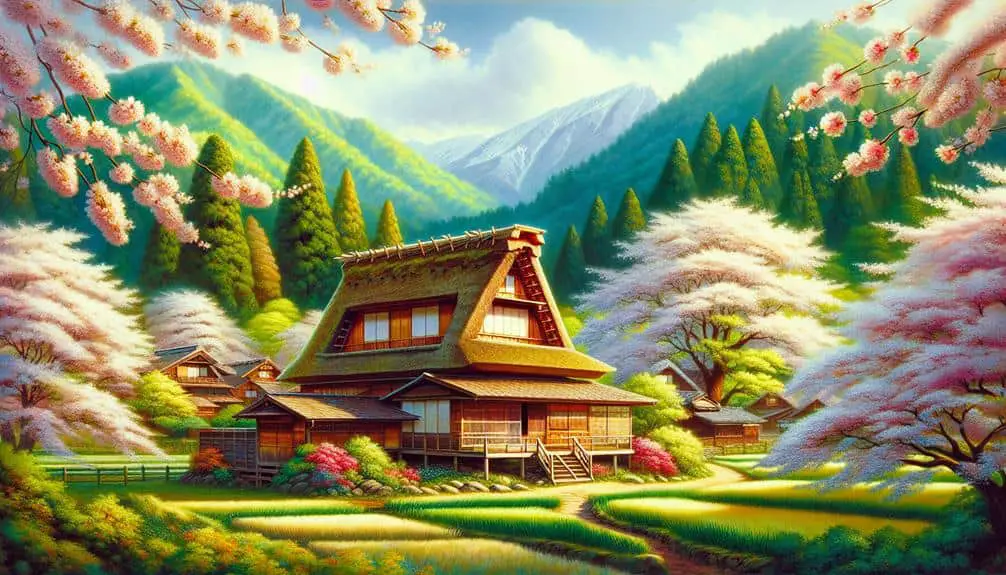Investigate the mysterious origins of Demon Blood Art, where ancient civilizations conducted blood sacrifices in dark rituals to attain power and forbidden knowledge. These early practices laid the foundation for the potent techniques wielded by modern practitioners. Uncover the evolution of demon blood techniques, from intricate rituals to innovative methods of infusion and manipulation. Visionary pioneers in the field revolutionized Demon Blood Art with groundbreaking advancements, uncovering forgotten rituals and creating intricate sigils. Explore how demons influence art, inspiring a rich tapestry of emotions and imagery. Discover the modern applications of demon blood, pushing artistic boundaries and exploring the dichotomy of light and dark. Discover more about the secrets and techniques that shape this enigmatic art form.
Key Points
- Ancient civilizations practiced blood sacrifices in rituals to dark entities.
- Demon Blood Art techniques evolved from mystical powers in demon blood.
- Pioneers in Demon Blood Art introduced groundbreaking advancements.
- Influence of demons on art adds complexity and mystery to artworks.
- Modern artists explore innovative ways to incorporate demon blood in their artworks.
Ancient Origins of Demon Blood Art
The ancient origins of Demon Blood Art can be traced back to mysterious rituals practiced by early civilizations, shrouded in secrecy and steeped in dark magic. These ancient rituals involved intricate ceremonies where individuals would offer blood sacrifices to dark entities in exchange for power and forbidden knowledge. Blood magic was at the core of these practices, as it was believed that blood contained the essence of life and could serve as a conduit for channeling supernatural abilities.
During these ancient times, practitioners of Demon Blood Art explored deeply into the forbidden arts, seeking to harness the raw power of the demonic domain. The rituals performed weren't for the faint of heart, requiring a deep understanding of the occult and a willingness to tap into the darkest corners of existence. Through these blood-soaked ceremonies, ancient civilizations sought to transcend their mortal limitations and ascend to a higher plane of existence where they could wield unimaginable power. The legacy of these early practitioners continues to influence the modern practice of Demon Blood Art, shaping its principles and techniques to this day.
Evolution of Demon Blood Techniques
Through centuries of experimentation and refinement, practitioners have continually adapted and enhanced the techniques of Demon Blood Art to reveal new levels of power and mastery. The origins of these techniques can be traced back to the mystical powers inherent in the blood of demons, which early practitioners sought to harness and control. Over time, these techniques evolved as practitioners investigated deeper into the nature of demon blood and its connection to the spiritual domain.
The evolution of Demon Blood Techniques has been marked by a gradual refinement of rituals and incantations used to access and channel the potent energies contained within demon blood. Practitioners have experimented with different methods of infusion, purification, and manipulation to reveal the full potential of these mystical powers. Through trial and error, ancient adepts discovered new ways to amplify the effects of demon blood, leading to the development of more potent spells and enchantments.
As practitioners continue to push the boundaries of their craft, the evolution of Demon Blood Techniques remains an ongoing journey of discovery and innovation, with each generation building upon the foundations laid by their predecessors.
Pioneers in Demon Blood Art
Pioneering practitioners in Demon Blood Art have spearheaded groundbreaking advancements in the harnessing and manipulation of the potent energies derived from demon blood, propelling the craft into new domains of power and intricacy. These visionaries introduced innovative techniques that revolutionized the field, setting the stage for the intricate practices seen today. Their historical significance can't be overstated, as they laid the foundation upon which contemporary Demon Blood Artistry thrives.
One of the key pioneers, known for their experimental approach, delved deep into the ancient texts to uncover forgotten rituals that tapped into previously unexplored reservoirs of demonic power. By merging these ancient practices with modern methodologies, they opened up a new universe of possibilities, expanding the scope of Demon Blood Art.
Another pioneer, through meticulous study and bold experimentation, developed a series of intricate sigils that, when combined with precise incantations, amplified the effects of demon blood tenfold. This breakthrough not only enhanced the potency of spells but also paved the way for more intricate spellwork that's now a hallmark of Demon Blood Art.
Influence of Demons on Art
An undeniable influence of demons on art manifests through the dark undertones and mystical motifs intertwined within various artistic expressions. Demon aesthetics have captivated artists for centuries, inspiring them to explore the depths of darkness and investigate the forbidden domains of the supernatural. This influence can be seen in the following ways:
- Symbolism: Demons often symbolize the darker aspects of human nature, serving as a mirror through which artists reflect on themes of sin, temptation, and inner turmoil. The incorporation of demon aesthetics adds layers of complexity to artistic works, inviting viewers to confront their own fears and desires.
- Imagery: Artists draw inspiration from the vivid imagery associated with demons – from their twisted horns and malevolent eyes to their shadowy forms and eerie presence. These visual elements infuse artworks with a sense of mystery and intrigue, inviting viewers to explore the unknown and confront the supernatural.
- Emotion: The influence of demons on art evokes a wide range of emotions, from fear and fascination to awe and reverence. By tapping into the primal fear of the unknown, artists create powerful emotional experiences that resonate with audiences on a profound level.
Modern Applications of Demon Blood
Modern artists have been exploring innovative ways to incorporate demon blood into their artworks, pushing the boundaries of traditional artistic mediums and techniques. This exploration has led to the emergence of ritualistic practices where artists engage with the supernatural aspect of demon blood, infusing their creations with an otherworldly essence.
By integrating demon blood into their work, these artists seek to tap into its mystical properties, adding layers of meaning and symbolism to their pieces.
Contemporary interpretations of demon blood art explore the dichotomy between light and dark, good and evil, blurring the lines between the earthly and the demonic domains. Artists experiment with different methods of application, from mixing demon blood with traditional paints to using it as a standalone medium. The inclusion of demon blood adds a visceral element to their creations, evoking strong emotional responses from viewers.




